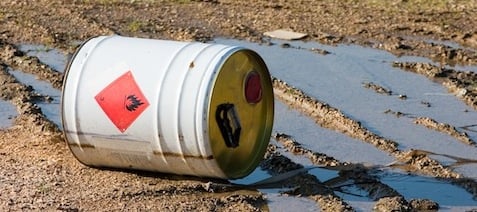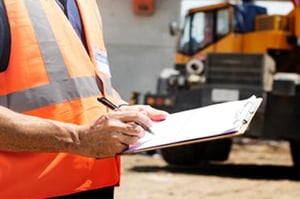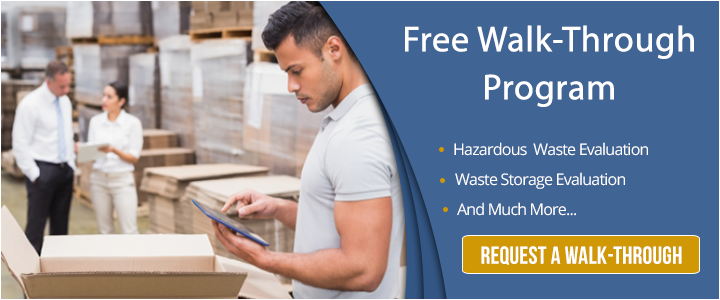Toxic chemicals have unfortunately spilled into the headlines of late between the Ohio Derailment and thousands of gallons of hazardous materials that entered a creek near the Delaware River northeast of Philadelphia.
Despite these alarming incidents, there is some good news out of the Pacific Southwest. According to EPA data, toxic chemical releases decreased slightly in 2021. It’s a trend in the right direction, as awareness of the importance of effective hazardous waste management processes is spreading.
Let’s take a closer look at what the Environmental Protection Agency (EPA) has found and what it could mean for your business if you generate hazardous substances.
Toxic Release Analysis
The EPA recently released its 2021 Toxics Release Inventory (TRI) National Analysis, which showed that environmental releases of TRI chemicals from facilities nationwide covered by the program had remained below pre-pandemic levels. The report showed that releases in 2021 were 10% lower than releases in 2012, despite an 8% increase from 2020 to 2021.
that environmental releases of TRI chemicals from facilities nationwide covered by the program had remained below pre-pandemic levels. The report showed that releases in 2021 were 10% lower than releases in 2012, despite an 8% increase from 2020 to 2021.
Chemical waste can come from a number of sources, including:
- Manufacturing and industrial processes
- Laboratories and research facilities
- Mining operations
- Agriculture
- Hospitals and healthcare facilities
- Construction and demolition
In 2021, facilities in California, Arizona, Hawaii, Nevada and the Pacific Island territories reported managing 932 million pounds of production-related waste and releasing 554 million pounds of TRI chemicals into the environment. The metal mining sector in Nevada and Arizona accounted for most of these chemical releases (84%).
Managing TRI Chemical Waste
The EPA’s current TRI toxic chemical list includes 787 individually listed chemicals and 33 chemical categories. Chemicals covered by the Toxics Release Inventory Program are those that cause at least one of the following:
- Cancer or other chronic human health effects
- Significant adverse acute human health effects
- Significant adverse environmental effects
Managing this type of chemical waste is critical for protecting both human health and environmental health. According to EPA’s analysis, facilities managed nearly 89% of their TRI chemical waste through sustainable practices like recycling, energy recovery and treatment in 2021. Facilities released 11% of their TRI chemical waste into the environment.
For companies that generate TRI chemical waste, it's essential to have a robust hazardous waste management process in place to avoid costly fines from violating state and federal regulations.
Hazardous waste management can help companies that generate chemical waste in several ways from compliance with regulations to reducing liability and more efficient use of resources through proper hazardous waste disposal.
The Value Of Hazardous Waste Transport
If your company generates any of the chemical waste types listed on the TRI Chemical List, proper transport to the appropriate recycling or treatment facilities is crucial for proper industrial waste disposal.
appropriate recycling or treatment facilities is crucial for proper industrial waste disposal.
The disposal of hazardous waste requires that you comply with “cradle to grave” regulations. These laws state that if you generate hazardous waste, you are legally and financially responsible for it from the time it is created to the time it is disposed of at the appropriate facility.
Cradle to grave laws ensure the safe and efficient movement of hazardous materials from the point of generation to the designated disposal site to help avoid spills, leaks and other accidents like those we mentioned at the top of this article.
Many industrial waste generators work with a reputable disposal company to help them manage this process and alleviate any issues that may arise from the transportation and disposal of their waste - especially once it leaves your facility. But what should you look for in a hazardous waste disposal company to ensure you are taking every precaution to comply with regulations?
Hazardous Waste Transporters: The Good, The Bad and the Ugly
Partnering with a reputable hazardous waste transporter is key to ensuring your business is safe from costly fines and public scorn. The last place you want your business to be is in the headlines because of an environmental catastrophe that could have been prevented.
The Ugly Side Of Hazardous Waste Transporting
Let’s begin with the ugly so you know what to look for when avoiding a disreputable chemical waste transporter. Although it may seem obvious that if a transporter isn’t licensed and insured, you should move on and choose another company. However, that’s not the only clear sign that you need to worry about.
You should never use a hazardous waste broker when you are setting up disposal for your industrial waste. Hazardous waste brokers are “middlemen.” They are NOT the same as hazardous waste transporters. In fact, brokers typically don’t own a hazardous waste transportation business. Instead, they act as the liaison between the buyer (you) and the transportation company that takes your industrial waste to a hazardous waste facility disposal site.
Brokers will take the quoted price they get from the transport company and mark it up with whatever percentage they want before submitting the quote to you for approval. Yet here’s the biggest reason why you should never use a hazardous waste materials broker: You lose control over who is handling your waste. That means you have no way of knowing what transportation company is taking your waste to a disposal site. It could be a company with a poor reputation, or worse, a company without the proper permits.
If something goes wrong during transport, you’re still liable due to cradle to grave requirements in California. It’s far better to work directly with a certified hazardous waste disposal company directly.
The Good (And Bad) Of Hazardous Waste Transporting
Now that you know what red flags to look for when hiring a hazardous waste transporter, let’s talk about the good qualities of a reputable partner.
In addition to picking up your hazardous waste and transporting it to the appropriate TSDF, the best disposal companies will:
- Help you establish an industrial waste management plan that covers all areas of your operations
- Identify uncertain waste streams through profiling and testing to ensure the right facilities receive the right hazardous materials
- Evaluate your waste streams to determine if the waste could be classified as non-hazardous waste (saving you money on your disposal fees)
- Develop site-specific plans that include training and emergency preparation
- Prepare manifests and other required paperwork needed for transport
- Offer evidence that your waste has been properly disposed of at the treatment and disposal facility
- Provide a hazardous waste walk-through program that evaluates your waste procedures and catches potential issues before they become costly mistakes
If the partner you are considering doesn’t offer these services, they aren’t necessarily bad companies. But as a toxic chemical generator, it’s important to work with a company that goes above and beyond the basic duties of transporting your waste while ensuring your business is in excellent hands.


Comment